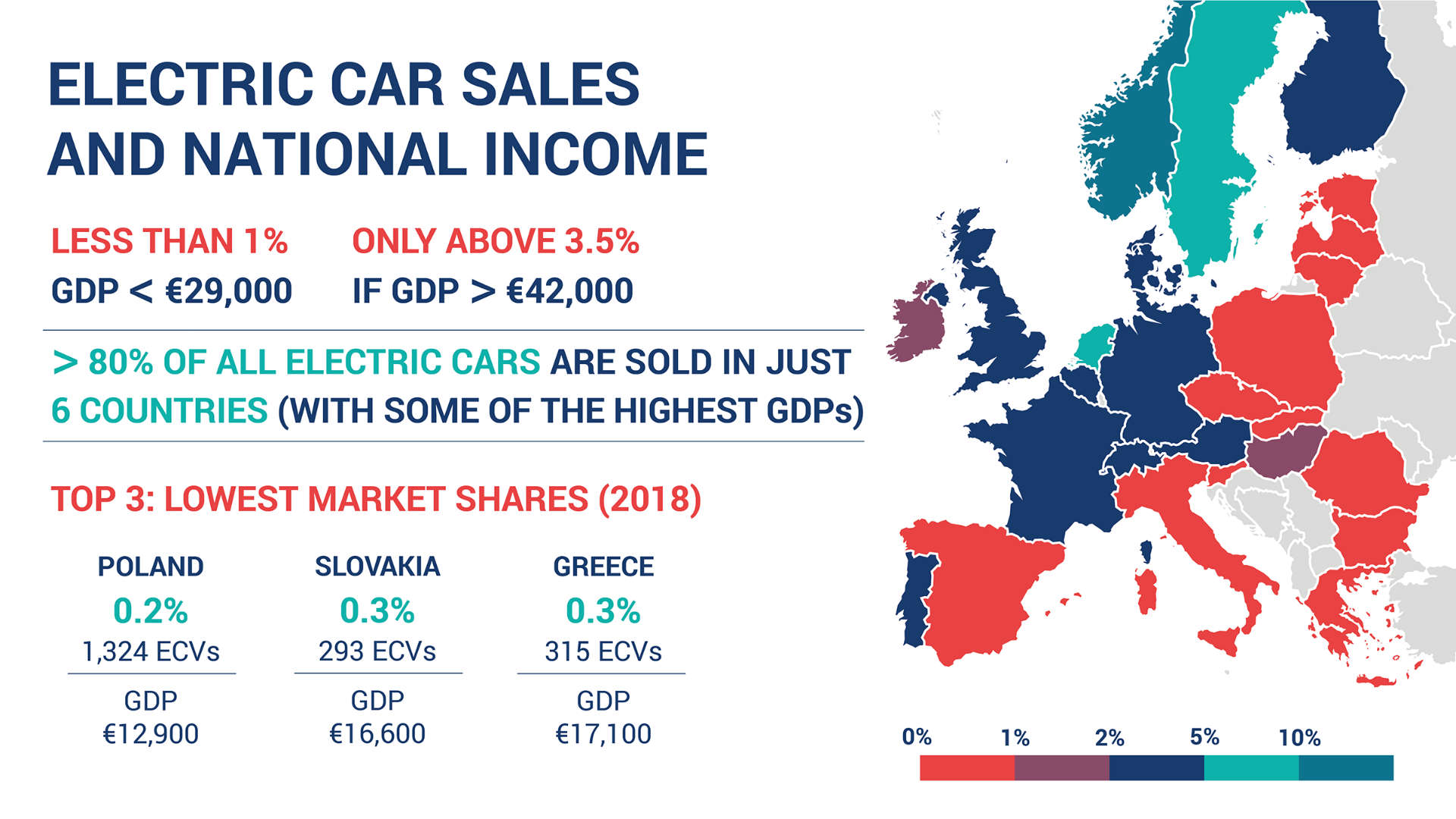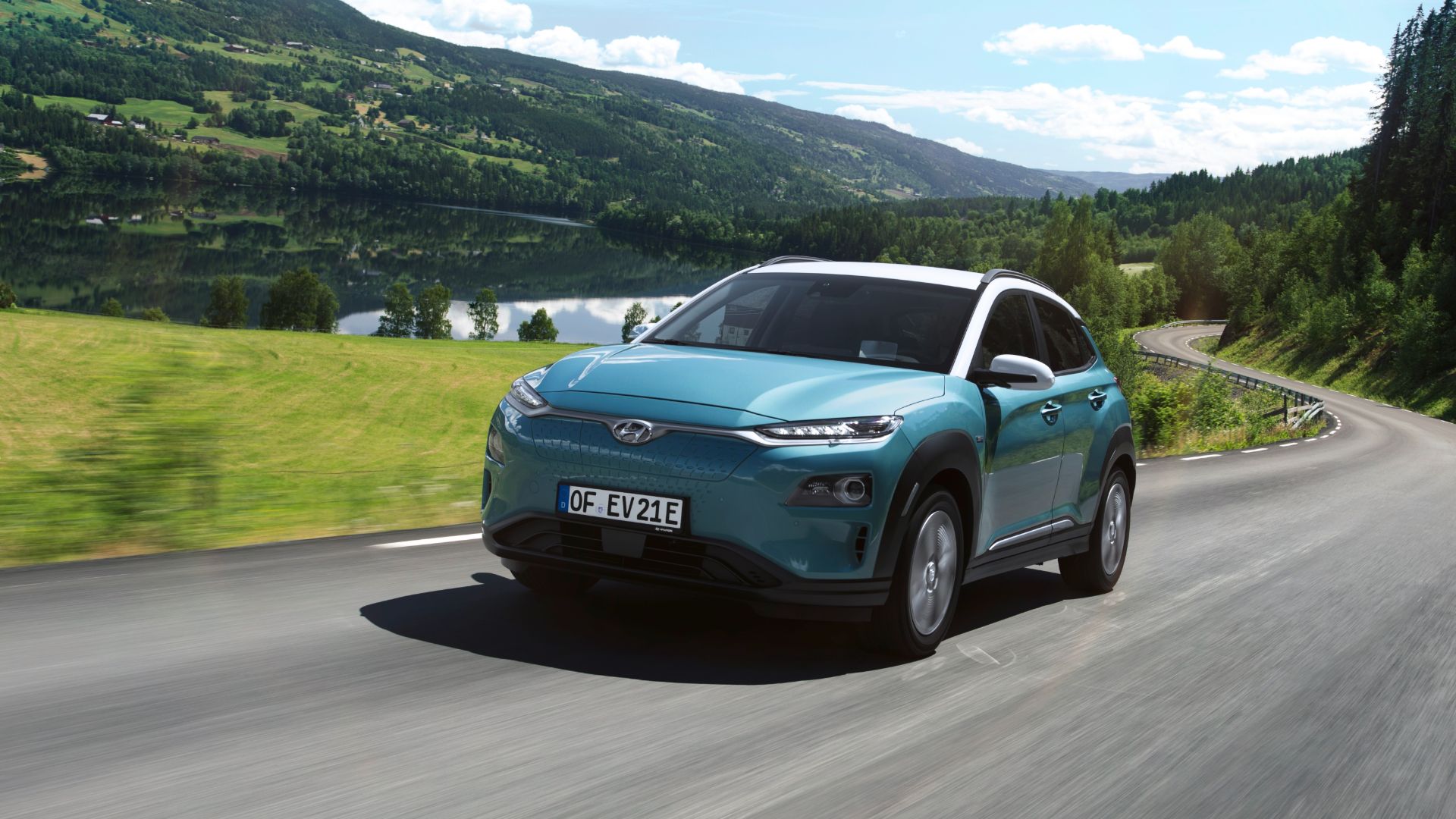
Electric car sales are not taking off in lower-income EU countries, according to new data published by the European Automobile Manufacturers’s Association (ACEA).
The research shows that all countries with an EV market share of less than one percent have a GDP per capita below €29,000 (£25,385). Conversely, an EV market share above 3.5 percent only occurs in countries with a GDP of more than €42,000 (£36,766).
It means that a huge 80 percent of the EU’s electric vehicles are sold in just six countries.

Poland, a country with a GDP of €12,900 (£11,292), has the lowest uptake of electric cars in the EU, with just 1,324 EVs sold in 2018, creating a market share of 0.2 percent.
It’s a similar story in Slovakia (0.3 percent market share) and Greece (0.3 percent), while EV sales in Latvia totalled just 93 in 2018.
By contrast, EVs are securing a stronger foothold in Scandinavia and the Netherlands, where financial incentives make electric car ownership a more viable proposition.
The majority of EU member states offer fiscal measures to stimulate electric car sales, but while most countries grant simple tax reductions, only 12 nations offer premiums or bonus payments to buyers of these vehicles.
‘A matter of priority’

ACEA secretary general Erik Jonnaert said: “People throughout the EU should be able to consider purchasing an electric vehicle – no matter which country they live in – north or south, east or west.
“The affordability of the latest low- and zero-emission technologies needs to be addressed by governments as a matter of priority.”
The EU recently approved stricter CO2 reduction targets of -15 percent, and -37.5 percent for the years 2025 and 2030 respectively. The current target of 95g/km CO2 for the year 2021 was set in 2013.
Earlier this year, we revealed that 21 million more electric vehicles are expected to hit the streets by the year 2030, with Deloitte predicting that by 2024, the cost to own a BEV will be on a par with that of a petrol or diesel vehicle – that’s just five years away.
Infographic courtesy of ACEA